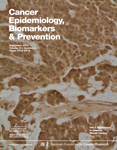A team of Finnish doctors set out to evaluate the natural history of antibodies versus tissue transglutaminase (TGA), endomysium (EMA), reticulin (ARA), and gliadin (AGA-IgG and AGA-IgA).
They looked at data for children genetically at risk for celiac disease, specifically, children who carried HLA-conferred risk of celiac disease who had been monitored frequently since birth. The research team was made up of S. Simell, S. Hoppu, A. Hekkala, T. Simell, M.R. Ståhlberg, M. Viander, H. Yrjänäinen, J. Grönlund, P. Markula, V. Simell, M. Knip, J. Ilonen, H. Hyöty, O. Simell.
Celiac.com Sponsor (A12):
The team looked at serum samples from 1,320 children who were genetically at risk for celiac disease. Serum samples taken between 2000 and 2003 were assessed for TGA. Samples testing positive for TGA were evaluated for all five antibodies. Also, all future samples for the given patient were similarly evaluated. Also, positive TGA patients were encouraged to have a duodenal biopsy.
The assessment was completed in August 2004. At that time, the test subjects ranged in age from 1 year to 9.5 years, with a mean age of 4.1 years. In all, 49 children (3.7%) were TGA positive. 26 of these TGA positive children submitted to biopsy. Celiac disease was diagnosed by biopsy in 20 of the 26. Of the 49 children who tested TGA positive, AGA-IgA surfaced at an average age of 2 years (+/- 1.5 over a range of 0.5 to 6.6 years for subjects). Compared to AGA-IgA, TGA, EMA, and ARA all surfaced together about 1 year later (TGA at 3.2 +/- 1.5, 1.0-7.0 yr, P < 0.001).
Key Antibodies Can Vanish Early in Childhood Celiac Disease
Even with ongoing gluten consumption, positive TGA values disappeared in 49%, EMA values disappeared in 49%, ARA values disappeared in 43%, AGA-IgA values disappeared in 41%, and AGA-IgG in 32%.
The research team concluded that there are likely potential triggers for celiac disease that are active before AGA-IgA surfaces, or about 3 months earlier on average than when the TGA-associated antibodies appear.
In a significant number of children, antibodies vanish spontaneously. This indicates that in many cases, conditions allow the regulatory immune phenomena to eliminate incipient celiac disease in genetically at-risk children even when gluten is still significant part of the diet.
Am J Gastroenterol 2007;102:1–10



.webp.9b05843efc652dc02f0ed05391ce22ea.webp)



Recommended Comments
There are no comments to display.